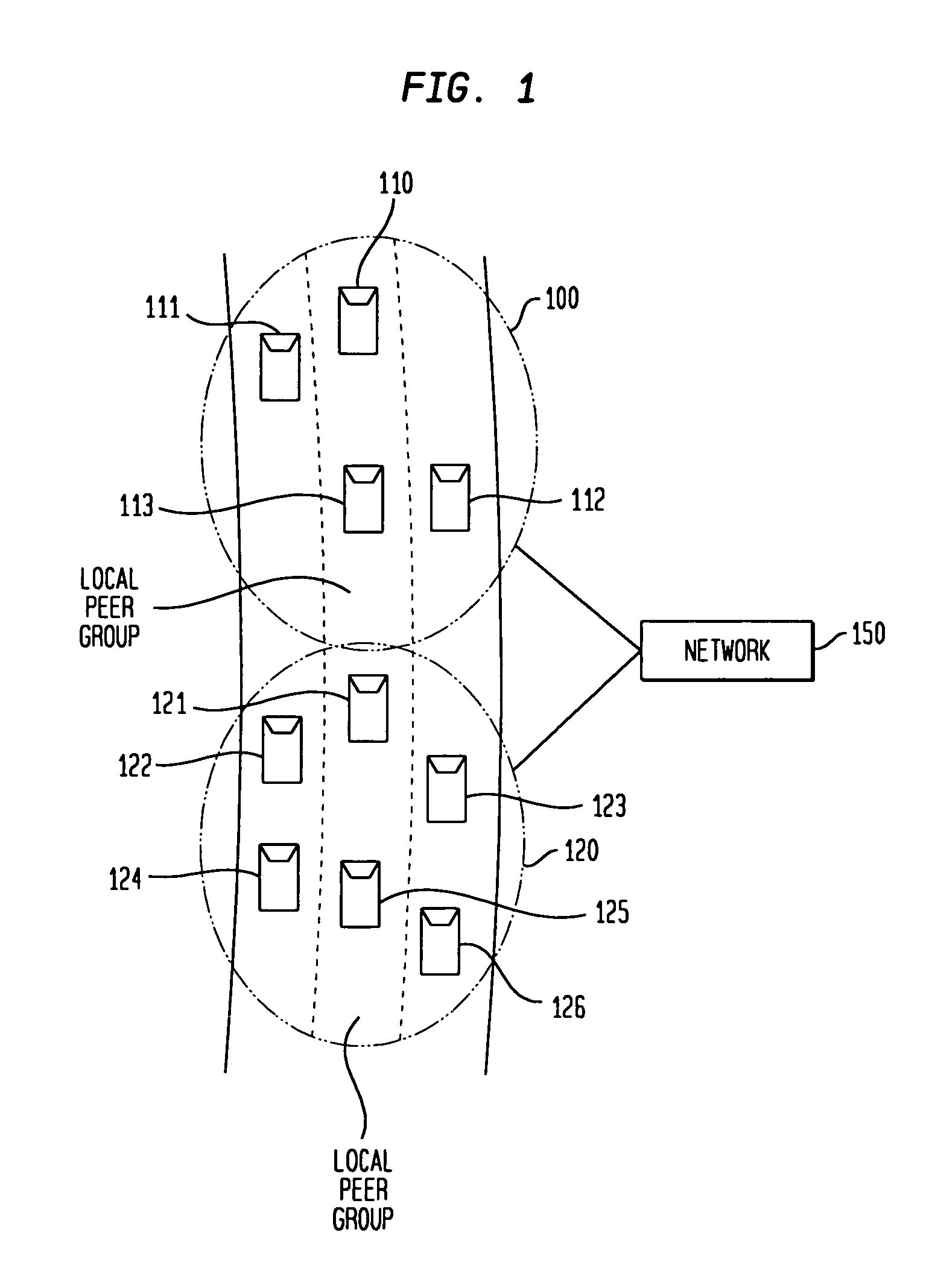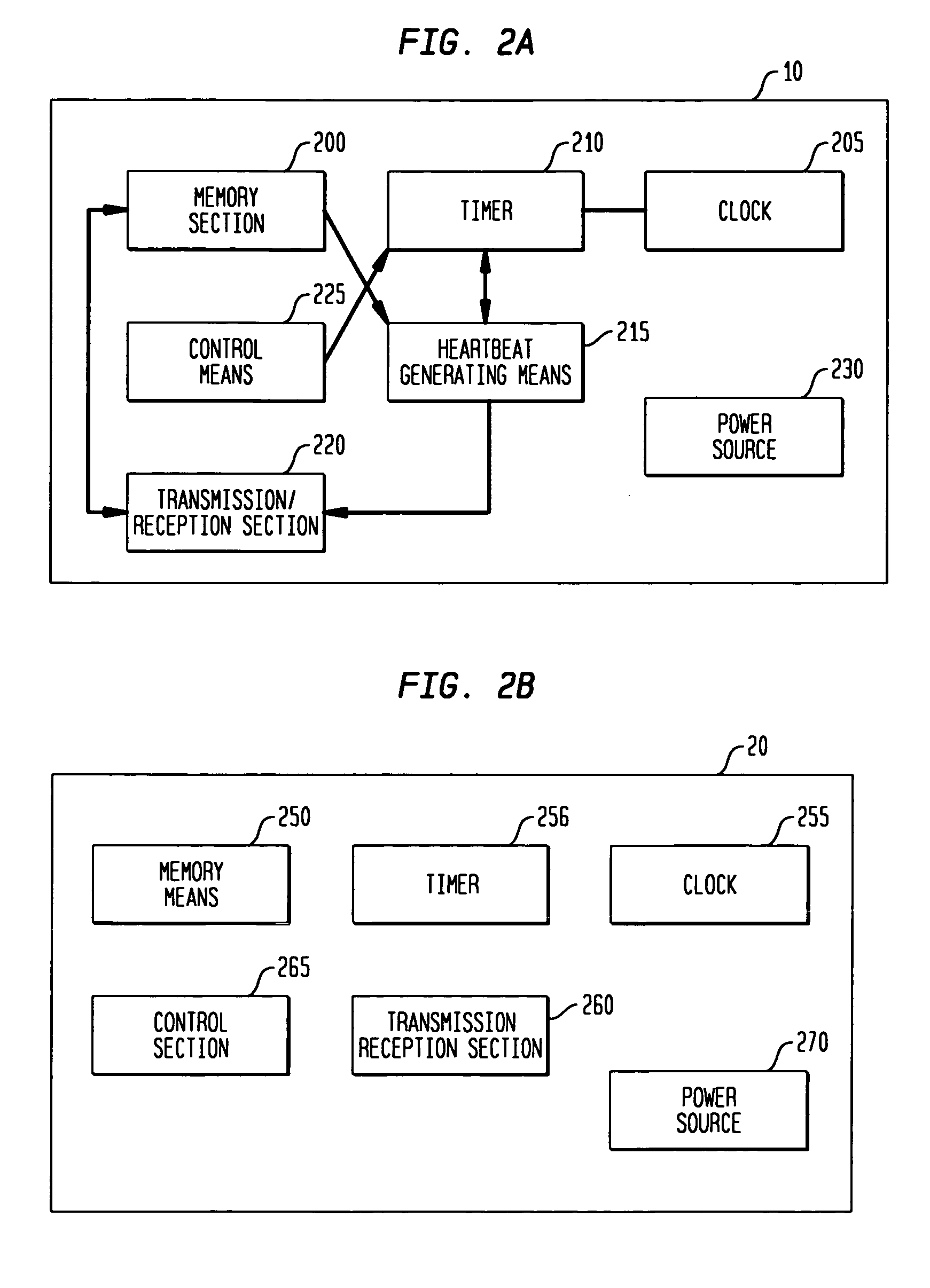Group-header based method to organize local peer group of vehicles for inter-vehicle communication
- Summary
- Abstract
- Description
- Claims
- Application Information
AI Technical Summary
Benefits of technology
Problems solved by technology
Method used
Image
Examples
first embodiment
[0051] In the invention, an LPG is formed from two different types of nodes: a Group Header (GH) and a Group Node (GN).
[0052] A GH is a moving device or node within the LPG that is designated to maintain and control the LPG without any ordering of the nodes or any infrastructure.
[0053] Each node or moving wireless device is capable of operating as a GH or GN. As such, each node includes elements or means that allow the node to function or operate as a GH or GN, respectively. FIG. 2A and FIG. 2B illustrate several of the means or elements that allow the node to operate as a GH (FIG. 2A), or a GN (FIG. 2B). However, even when a node operates as either a GH or GN, all of the structural elements or means are present for both the GH and GN, but only specific elements function based upon the mode of operation.
[0054] Additionally, FIGS. 2A and 2B depict only certain means or features that function when the node is either a GH or GN, respectively; however, the features depicted are only f...
third embodiment
[0110]FIG. 9 illustrates the invention. In this embodiment, the LPG 910 is formed from a Group Header node (GH) 10, a plurality of gateway nodes 900 and regular nodes 905. The GH 10 is a special gateway node or a clusterhead. In this embodiment, only a GH 10 and the gateway nodes 900 can forward message. This reduces the flow of messages in the wireless channel from the GH only based organization, as described above. In the above-described embodiment, there is plurality of control messages that are sent out to exchange information between GH 10 and each node, also to maintain the structure of LPG 910. This might result in the wireless channel being occupied and jammed by these messages.
[0111] In this embodiment, a GH 10 is selected using the same header resolution as disclosed for the first embodiment and the LPG 910 will have one centralized GH 10 within the LPG 910. At this point, there will be no other nodes within the LPG and no other structure. The GH 10 will then broadcast a h...
PUM
 Login to View More
Login to View More Abstract
Description
Claims
Application Information
 Login to View More
Login to View More - R&D
- Intellectual Property
- Life Sciences
- Materials
- Tech Scout
- Unparalleled Data Quality
- Higher Quality Content
- 60% Fewer Hallucinations
Browse by: Latest US Patents, China's latest patents, Technical Efficacy Thesaurus, Application Domain, Technology Topic, Popular Technical Reports.
© 2025 PatSnap. All rights reserved.Legal|Privacy policy|Modern Slavery Act Transparency Statement|Sitemap|About US| Contact US: help@patsnap.com



